Concrete and steel mausoleum for an engineer completed at Spanish cemetery
Spanish architects Amparo and Andres Martinez Vidal paired bulky concrete with delicately folded steel to create this mausoleum in Murcia (+ slideshow).
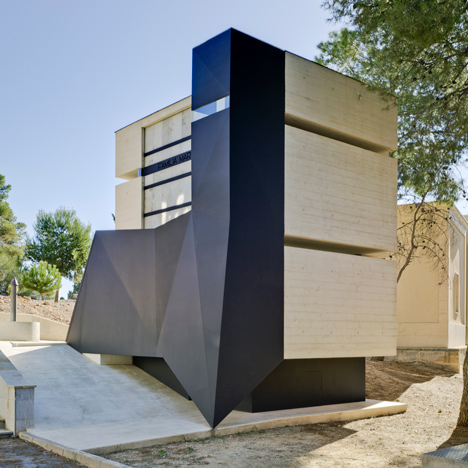
Located at one of the Spanish city's cemeteries, the mausoleum was designed by Martínez Vidal Design Office (MVDO) at the request of an engineer and features an intricate structure intended to embody the complex nature of religion.
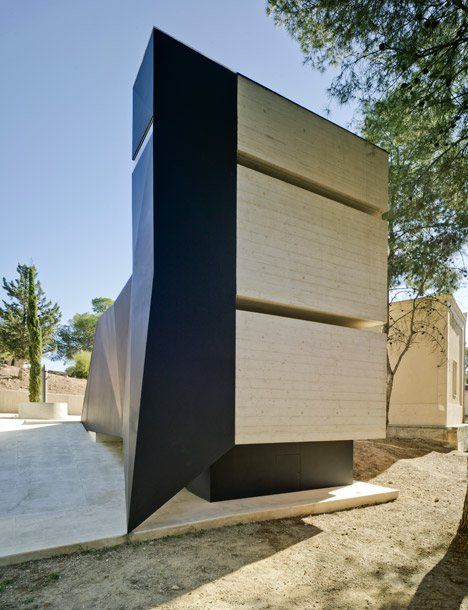
"Religion translates complex situations, polarising and placing them opposite in hell and heaven, two antagonistic ends," said Amparo Martinez Vidal. "Our purpose was to make difficult what was simple, and to turn what was sober into something innovative."
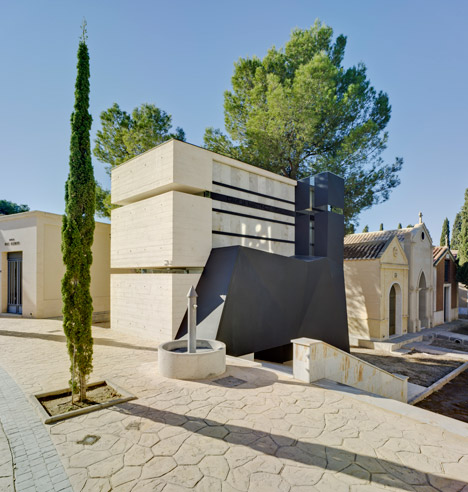
Externally, the structure is visually separated into two sections. The first is a rectilinear concrete body, broken up by sliced horizontal openings, and the second is a lacquered steel volume that accommodates the entrance.
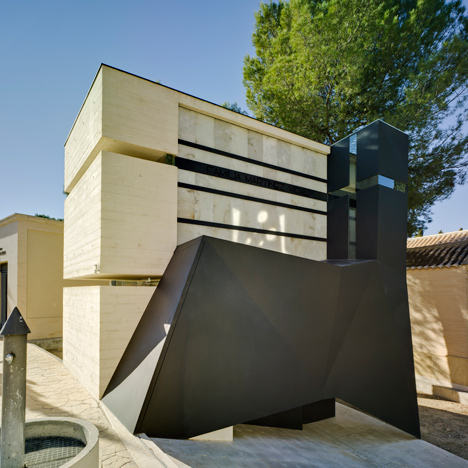
Neither of these materials represent a load-bearing structure – this function is carried out by a steel framework concealed behind.
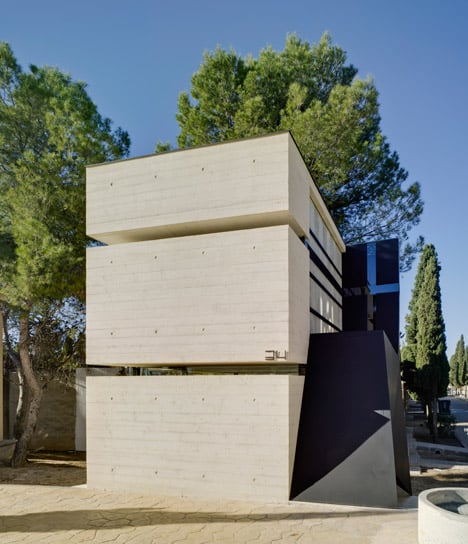
"Concrete in this project is nothing but facing and it delegates its traditional carrying function to steel, the truly structural skeleton," said the architect.
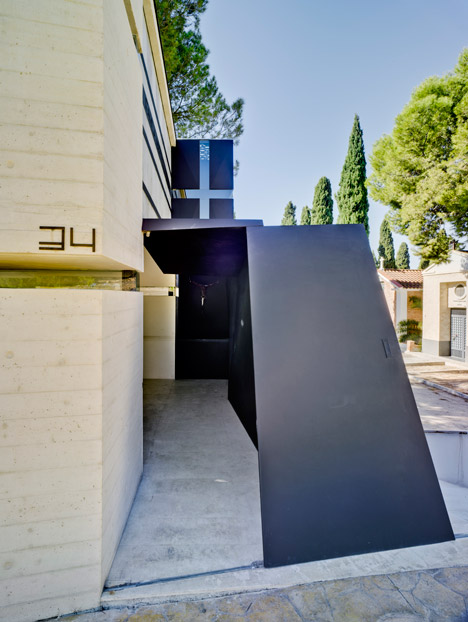
The two sliced openings trace a route around the perimeter of the structure, allowing daylight to permeate the interior. They connect with a tree motif that perforates one wall, and also meet a cross-shaped window positioned above the entrance.
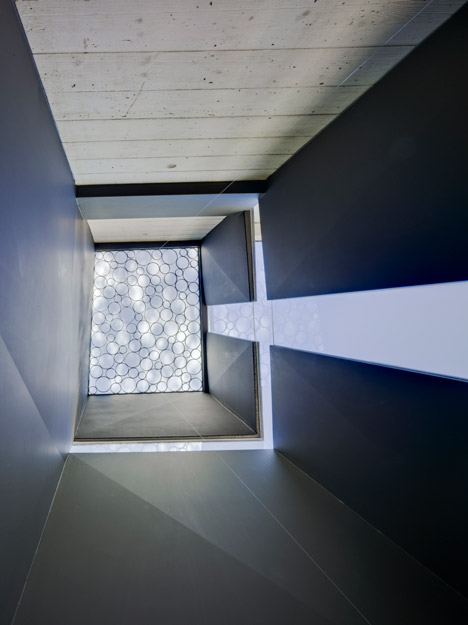
"What is physical, what is tectonic, represented by reinforced concrete, seems to stand up between two glass horizontal figures, which connect the internal and the external sides of the construction," said Martinez Vidal.
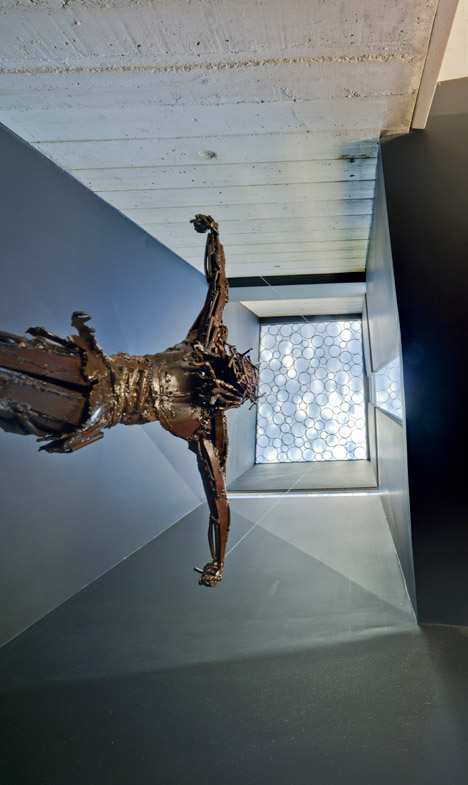
At the request of the client, limestone was used for the walls and flooring inside the building, alongside enamel-coated steel panels.
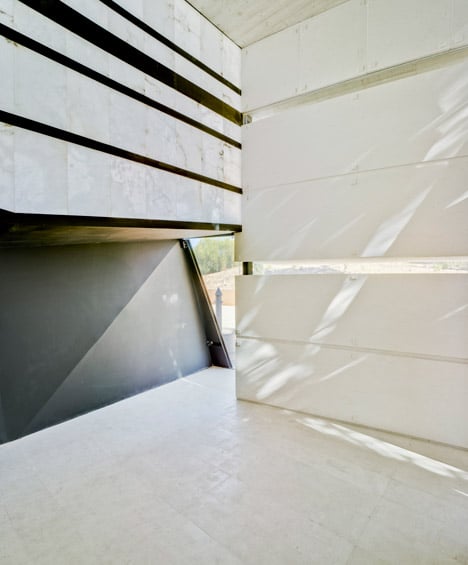
An iron statue of Christ is the only object in the space and sits below a skylight, ensuring it is always illuminated by sunlight.
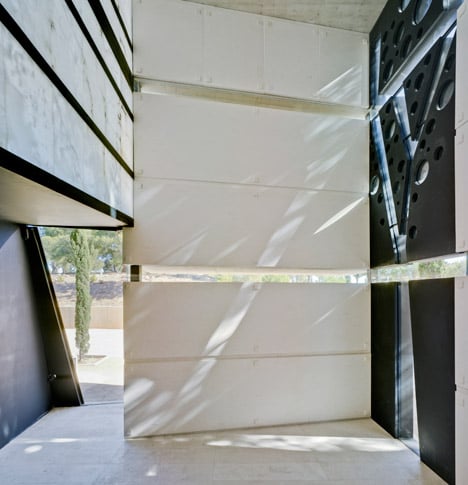
"The iron sculpture, treated with an oxidation that simulates Christ nail's blood, appears to be floating," added the architect.
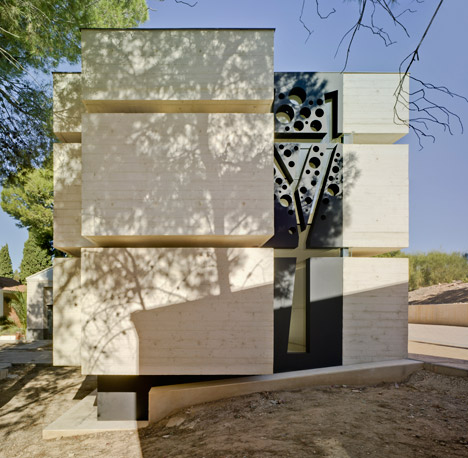
Photography is by David Frutos.
Here's a project description from Martínez Vidal:
Pantheon for an engineer
A trompe-l'œil (French for "deceive the eye") is by definition a technique which tries to deceive the eye by means of the architectural surrounding environment, the perspective, the shading, and other optical illusions, creating an "intensified reality" or a "substitution of the reality".
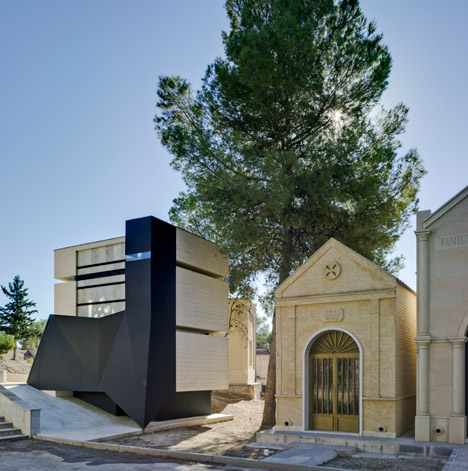
Religion translates complex situations, polarising and placing them opposite in hell and heaven, two antagonistic ends. Our purpose was to make difficult what was simple, and to turn what was sober into something innovative. Concrete in this project is nothing but facing and it delegates its traditional carrying function to steel, the truly structural skeleton. What is made with stone materials is weightless. Therefore, concrete somehow gravitates whereas glass, traditionally a weightless material has a carrying function. What is physical, what is tectonic, represented by reinforced concrete, seems to stand up between two glass horizontal figures which connect the internal and the external sides of the construction.
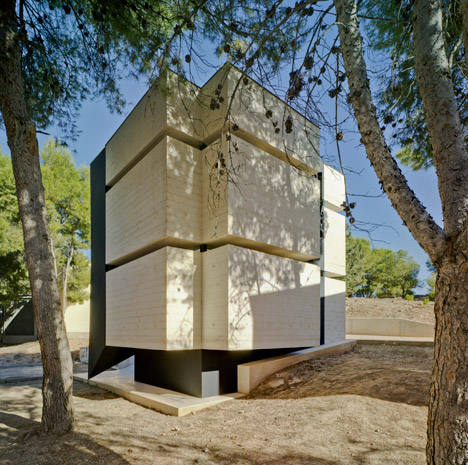
The lacquered sheet folder indicates the entrance and shows the way to the altar. Once again, it looks as if it was overflying the ground. The stone material was almost a requirement of the developer. The innovation consists in the loss of the carrying function of the stone material. On the other hand, the use of concrete was in line with our purpose of using lasting and sober materials, which would generate a perpetual dialogue. The idea was to reinterpret them in a contemporary context.
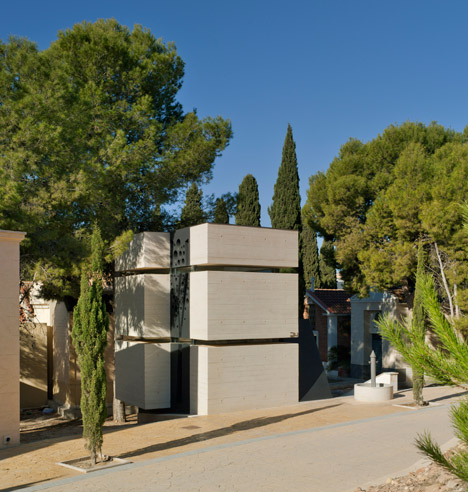
In the altar, Christ is illuminated with a skylight. The iron sculpture, elaborated by Fernando Saenz de Elorriaga, and treated with an oxidation that simulates Christ nail's blood, appears to be floating. In the interior, the alabaster controls the light keeping the colours of the reinforced concrete with a higher arid proportion.
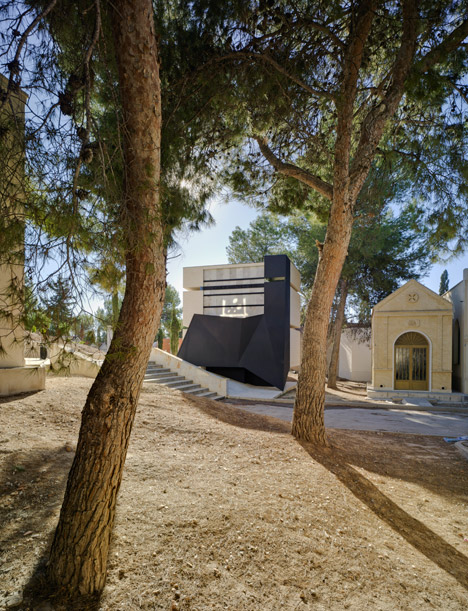
Our ancestors used to build cathedrals which straightened to the sky to uplift our prayers. The material homogeneity is in this case what sends us to the monumental scale, what makes us think that there might be something bigger than ourselves which transcends us, just like the magic of the heavy material which levitates.